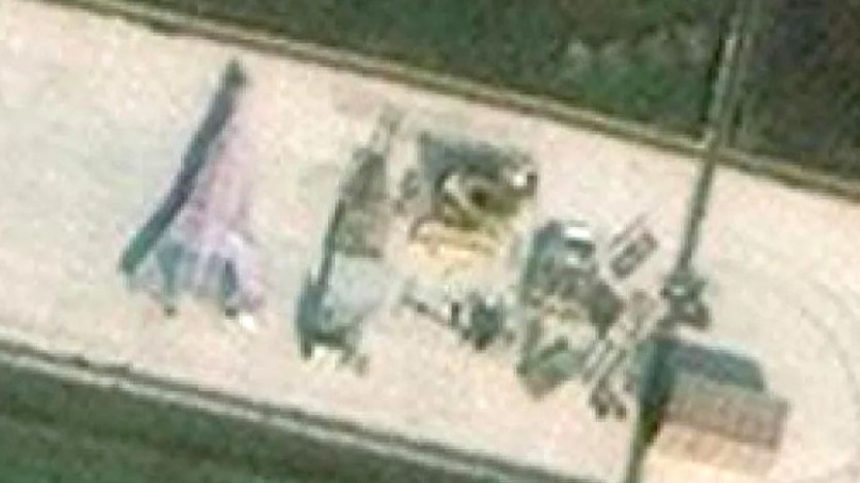On August 16, 2025, Beijing sent shockwaves through the defense world as parade rehearsals showcased a colossal unmanned underwater vehicle (UUV), first spotted by FaySue6 on X. This never-before-seen behemoth, dubbed the AJX-002, bears an eerie resemblance to Russia’s nuclear-powered Poseidon torpedo, sparking intense speculation about China’s naval ambitions. Is this a bold step toward redefining undersea warfare or a calculated flex of Beijing’s technological prowess? Let’s dive into the details of this mysterious underwater giant.
A Glimpse of the Future: The AJX-002 Emerges
The AJX-002 is no ordinary drone. Measuring an impressive 18 to 20 meters long and up to 1.5 meters in diameter, this extra-large unmanned underwater vehicle (XLUUV) boasts a sleek, torpedo-like design with pump jet propulsion and lifting lugs for crane deployment. Parade rehearsals revealed not one but six of these UUVs, including four AJX-002 models and two larger variants with double the diameter. This suggests China isn’t just experimenting—this is a program with serious scale and intent.
What sets the AJX-002 apart? Its pump jet propulsion hints at high-speed capabilities, but the absence of a ventilation mast raises eyebrows. Could it be nuclear-powered? Analysts speculate it might use a disposable nuclear reactor, allowing speeds over 30 knots for up to 200 hours before switching to battery power. Unlike Russia’s Poseidon, which is a catastrophic “doomsday” weapon with a potential 100-megaton warhead, Chinese sources claim the AJX-002 is a versatile platform for reconnaissance, conventional strikes, or potentially nuclear payloads.

How Does It Stack Up Against Russia’s Poseidon?
Russia’s Poseidon, unveiled in 2018, is a strategic juggernaut designed to bypass missile defenses and devastate coastal cities or carrier groups. By contrast, the AJX-002 appears to be a multi-role player. Chinese nuclear scientist Guo Jian, writing in the Journal of Unmanned Underwater Systems, insists it’s not a direct Poseidon clone, emphasizing its flexibility for surveillance or targeted strikes. Still, its size and design suggest nuclear capability isn’t off the table, keeping Western strategists on edge.
While Poseidon is a mature (if chilling) concept, the AJX-002 is likely in earlier development, with limited operational history. China’s track record with smaller UUVs like the HSU-001 and research vessels like the Blue Whale shows steady progress, but the AJX-002 signals a leap toward larger, more ambitious systems. Its parade debut hints at mass-production plans, a sign Beijing is doubling down on autonomous naval tech.
Why This Matters: Strategic Ripples Across the Indo-Pacific
The AJX-002 isn’t just a shiny new toy—it’s a geopolitical statement. A nuclear-capable UUV would give China an asymmetric edge, forcing the U.S. and its allies to rethink naval strategies in the Indo-Pacific. Capable of threatening aircraft carriers, submarines, or coastal infrastructure, this drone could disrupt traditional anti-submarine defenses. It’s a clear signal of China’s intent to challenge U.S. maritime dominance and diversify its deterrence beyond ballistic missiles.
The timing is no accident. As tensions simmer in the Pacific, from Taiwan to the South China Sea, the AJX-002 underscores Beijing’s push for technological superiority. Its modular design and potential for mass production suggest China is preparing for a future where autonomous systems dominate the seas.
What’s Next for China’s Underwater Ambitions?
The AJX-002’s debut is a wake-up call. Whether it’s a direct rival to Poseidon or a unique hybrid of surveillance and strike capabilities, this UUV proves China is serious about reshaping naval warfare. As Beijing refines its undersea arsenal, the world will be watching closely—because the balance of power beneath the waves may never be the same.




